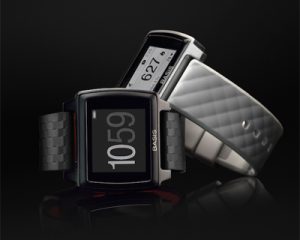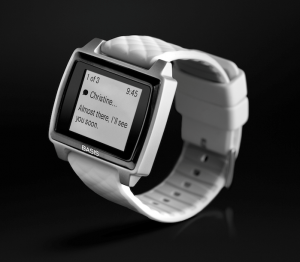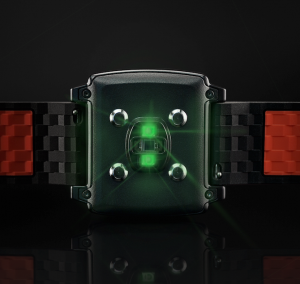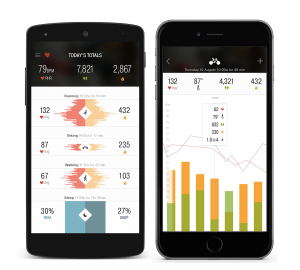It’s been a while since Intel acquired Basis, the company behind one of the most sophisticated fitness wearables on the market – the B1 fitness band. The prominent chip company made a promise that they’d help Basis improve the wearable for the better, and that was that. A little over six months later, Intel – and their new partner – unveiled the fruits of their labor, called the Basis Peak. The improved model can now track a whole slew of health and fitness data, and even offers some new features. More exciting though is that it looks a hell of a lot better than the previous model. One could even go so far as to say the Basis Peak is a desirable accessory when it comes to appearance.
Don’t take our word for it, let’s take a closer look and see what the Basis Peak has to offer.
Basis Peak Fitness and Health Tracking Sensors
 The Basis Peak is loaded to the brim with fitness and health tracking sensors, which is what helped its predecessor the B1 earn the title as “most sophisticated” on the market. With the sensors, users can track things like sweat output, heat dissipation, blood flow, heart rate and more. It has an optical heart rate sensor, Galvanic skin response monitor, skin thermometer, and 3-axis accelerometer.
The Basis Peak is loaded to the brim with fitness and health tracking sensors, which is what helped its predecessor the B1 earn the title as “most sophisticated” on the market. With the sensors, users can track things like sweat output, heat dissipation, blood flow, heart rate and more. It has an optical heart rate sensor, Galvanic skin response monitor, skin thermometer, and 3-axis accelerometer.
You can track the following data:
- Steps
- Calories burned
- Heart rate
- Perspiration
- Skin temperature
- Sleep patterns
- REM (Rapid Eye Movement) cycles
New to the Basis, however is that it can track heart rate during a workout. This was not possible on the previous model according to Basis CEO Jef Holove, who says that the optical heart rate sensor produced too much noise while it was in motion.
According to Holove, the new optical heart rate sensor in the Peak will produce more accurate results even during a heavy workout. You can wear it while playing sports, doing a daily run, walking or even swimming laps. The whole time it should accurately calculate your heart rate as well as any other data you’ve asked it to. This is important, because there are few fitness trackers available that will monitor multiple levels of information. The Pebble was only recently updated to continue monitoring heart rate in addition to other tasks.
The Peak also tracks sleep patterns to allow users to better understand the quality of sleep they’re getting. Through the companion app – for iOS and Android devices – you can monitor habits like deep or poor sleep cycles. Hopefully, this should help you get a better night’s rest after a workout, and gauge whether or not your body is in good shape. You’ll know if you’re hurting your body right away because your sleep cycles will change.
Smartwatch Features
The Basis Peak connects to Android and iOS devices through an integrated Bluetooth LE radio, which means in addition to the fitness and health tracking support it also offers basic smartwatch features. We’re not talking about advanced stuff like email checking, or internet browsing here. Instead, the Peak can display incoming texts or calls. Of course, it will also show fitness notifications such as you need to go workout.
The company also plans to offer their API to developers to allow for third party apps. If and when the API becomes available, the device will become increasingly more powerful similar to the Pebble. Independent developers have a way of improving upon a device’s functionality and features often pushing them to the limit.
Basis Peak Design
 This time around Basis has outfitted the Peak with an LCD touchscreen. The previous model did not have one, and as such the controls were physical. The Peak also has a metal exterior as opposed to plastic.
This time around Basis has outfitted the Peak with an LCD touchscreen. The previous model did not have one, and as such the controls were physical. The Peak also has a metal exterior as opposed to plastic.
The stock band is made of silicone, but the brand’s use of a standard 23mm port means you can swap it out for any custom band if you so desire. In that respect, the Peak is customizable allowing you to swap in a leather, cloth or alternate band of your preference. Surprisingly, the stock band actually looks a lot like metal links.
Perhaps most interesting is that the Peak looks quite attractive. The Basis B1 fitness band was lacking in this department and looked rather bulky, no thanks to its physical controls. The metal body and Gorilla Glass means it will be durable too, which is necessary for sports and fitness activities.
Basis Peak Hardware
 Intel and Basis have yet to reveal the full list of specifications on the Peak, but here’s what we know so far. It’s outfitted with an LCD touchscreen display, one that will show off monochrome information – black and white for those not in the know. The display is protected by Corning’s Gorilla Glass 3 which is scratch and shatter resistant.
Intel and Basis have yet to reveal the full list of specifications on the Peak, but here’s what we know so far. It’s outfitted with an LCD touchscreen display, one that will show off monochrome information – black and white for those not in the know. The display is protected by Corning’s Gorilla Glass 3 which is scratch and shatter resistant.
The battery life is rated at four days total, though it may be less with heavy usage. Finally, the device is water resistant up to 5 ATM, which means it can be taken to a depth of 50 meters.
The Basis Peak will be available for $200, and will be shipping to retailers starting this month (October). However, it won’t be widely available to consumers until later in November. If you want one soon you’ll have to stay on the lookout, otherwise you can just wait until the Peak is more prevalent everywhere. Unfortunately, official retailers haven’t been announced yet so we don’t know who is going to carry the Peak or whether or not there are some exclusive distributors out there. Thanks to Intel, the Basis Peak should be available in more countries than its predecessor – a common benefit of having such a big backer behind you in Basis’ case.
Who knows? Maybe with Intel’s name on it, we’ll even see this thing be more successful. It’s a charming little device to say the least, packed to the brim with fitness and health tracking features. The fact that it looks pretty damn good is a bonus.
The Basis Peak
 Of course, the Basis Peak is just one of many fitness related wearables hitting the market. The smartwatch and fitness tracking industry is seeing a boon currently, but to be quite honest that’s an understatement. The market is pretty much saturated at this point, but it won’t change anytime soon.
Of course, the Basis Peak is just one of many fitness related wearables hitting the market. The smartwatch and fitness tracking industry is seeing a boon currently, but to be quite honest that’s an understatement. The market is pretty much saturated at this point, but it won’t change anytime soon.
That said, the Basis Peak looks to be an incredibly competent device especially for those interested in the health and fitness support. It’s not going to be an advanced smartwatch, even though it may have a few more features thanks to third party support, but that’s okay. It’s good to have niche devices like this available in addition to the more powerful ones. It gives all manner of folks different options to choose from. More importantly, if there’s one thing that the smartwatch market definitely needs it’s more competition to drive up innovation. We have yet to see a manufacturer break the barrier when it comes to a desirable device. The Moto 360 looked to be that device – a game-changer – for a while, until it launched and people realized the battery only lasts for a little over a day. We imagine the Apple Watch will have the same effect when it launches too, as battery life is expected to be comporable to the Moto 360.
What do you think of the Basis Peak? Is it a wearable you’d be interested in? Is the price point reasonable at $200? Are there other devices on the market that you would rather have?
